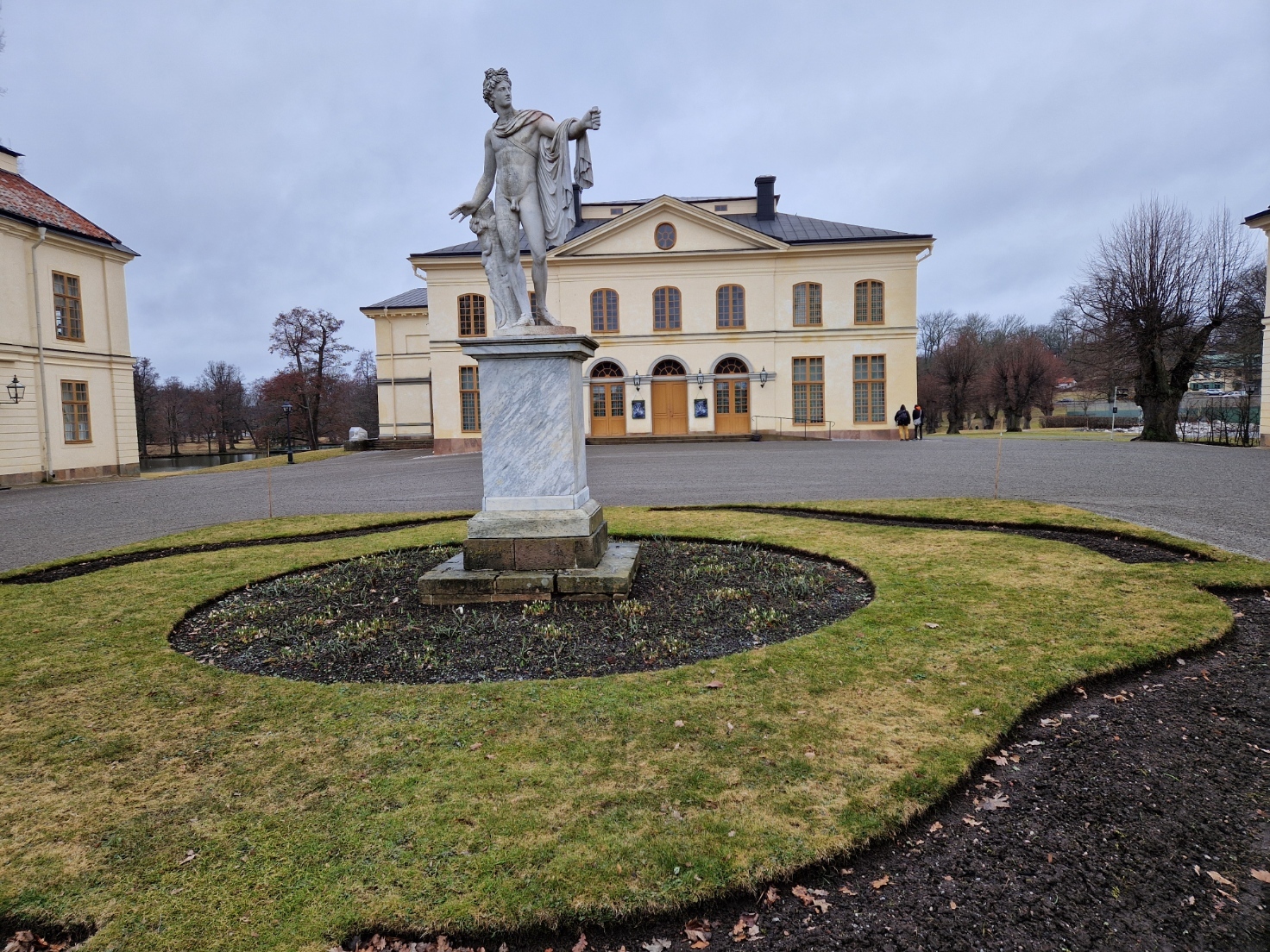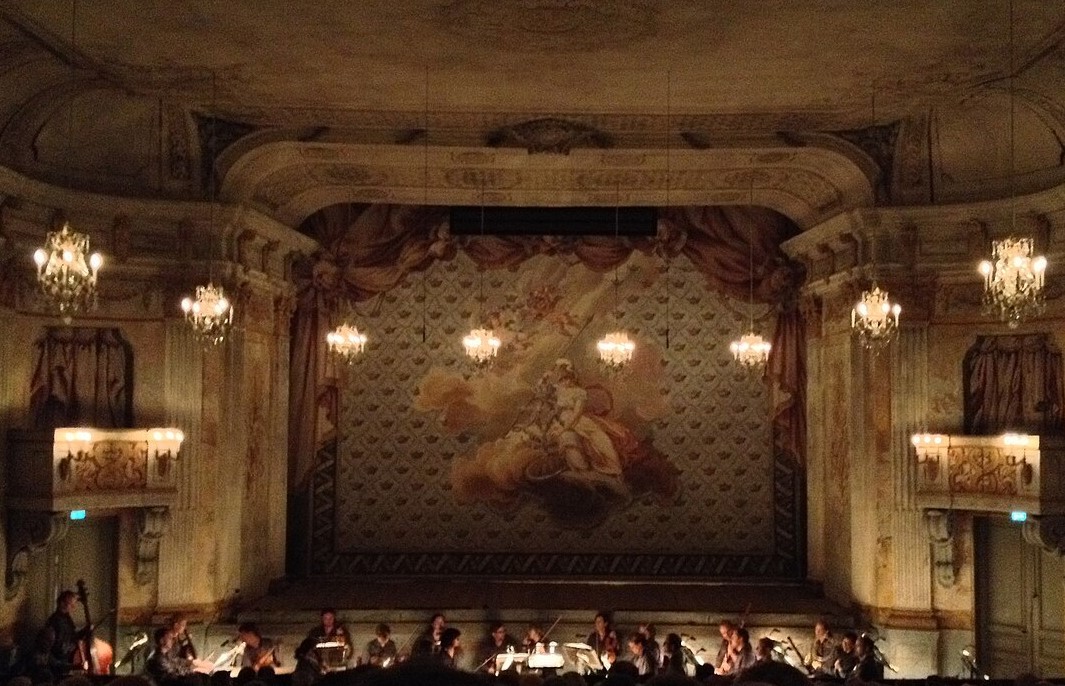Drottningholms slottsteater
Vid Drottningholms slott finns en unik 1700-talsteater. Det är världens äldsta teater som än i dag är bevarad med maskineri i original. Även dekoren är bevarad, men den dekor som används på scenen är kopior av dessa.
Vi kan tacka kung Adolf Fredriks gemål, drottning Lovisa Ulrika, för teaterns existens. Förutom att ägna sina dagar åt att planera statskupp och skapa en union med Preussen, där hennes bror Fredrik den store var härskare, så hade hon ett stort kulturellt intresse. Strax efter sin ankomst till Sverige 1744 etablerade hon ett sällskap för amatörteater vid hovet. Men hon var missnöjd med den enligt henne usla kvaliteten på svensk teater. 1753 engagerade hon i stället ett professionellt franskt teatersällskap, och 1754 lät hon bygga ett teaterhus där den nuvarande slottsteatern ligger.
Det första teaterhuset blev dock inte långlivat. En brand utbröt under en föreställning 1762. Den franska skådespelerskan Marie Baptiste upptäckte branden och rusade ut på scenen för att slå larm. Men publiken trodde att det ingick i pjäsen, och det krävdes att hon än en gång skulle komma in och larma innan publiken förstod att det var allvar. Fyra personer omkom, och skådespelarna förlorade allt de ägde eftersom teatern också var deras hem. Lovisa Ulrika lät bekosta en ny teater, den nuvarande, som byggdes 1764-66. Arkitekt var Carl Fredric Adelcrantz, som även ligger bakom bl.a. Kina slott, Adolf Fredriks kyrka, Sturehovs slott och Trångsunds herrgård.
Den riktiga storhetstiden för teatern inföll när Lovisa Ulrikas son, Gustav III, tillträtt som regent. Hans teaterintresse var om möjligt ännu större än hans moders, och han medverkade ofta själv i skådespelen. Från 1777 fram till Gustav III:s död 1792 gavs uppsättningar varje sommar på slottsteatern. Efter mordet på Gustav III fanns dock inte längre någon som hade något större intresse att driva verksamheten. Teatern användes därefter endast sporadiskt, och efter 1858 föll den i glömska. Huset förvandlades i stället till ett möbelmagasin.
1921 var den unge teater- och litteraturvetaren Agne Beijer, amanuens vid Kungliga biblioteket, på jakt efter en tavla som kanske kunde finnas bevarad i den gamla teaterbyggnaden. I jakten efter tavlan upptäckte han i stället en bortglömd bevarad 1700-talsteater. Han tog initiativ till att rusta upp den, och redan 1922 kunde den återinvigas. Sedan dess har teatern använts allt oftare, och numera ges offentliga operaföreställningar varje sommar. Hör mer om återupptäckten i detta radioprogram.
Cachen
För att få logga denna cache som funnen ska du bifoga ett fotografi från platsen. På fotografiet ska teatern vara synlig plus antingen du själv (ansiktet behöver inte synas) eller en lapp med ditt geonick. Du får gärna vara kreativ, till exempel genom att göra en teaterpose eller skapa en fantasfull teckning med ditt geonick, men det är inget krav för att logga. Inkludera gärna även statyn Apollo di Belvedere i bilden.
 Foto: CO
Foto: CO
The Drottningholm Palace Theatre
At the Drottningholm Palace there is a unique 18th century theatre. It is the oldest theatre in the world still in use with its original stage machinery. The original scenery is also preserved, but the scenery used on stage is a replica of it.
The Swedish queen Louisa Ulrika of Prussia was deeply interested in culture, in particular literature and theatre. Soon after her arrival to Sweden in 1744 she engaged in amateur theatre. However, she was disappointed by the low standards of the Swedish actors. In 1753 she replaced them with a French professional team, and at her behest a theatre was built for them at Drottningholm in 1754.
The first building was however burnt down in 1762 during a performance. The French actress Marie Baptiste, who discovered the fire, tried to raise the alarm. The audience did though believe this was part of the performance. She had to once again enter the stage until people understood this was a real alarm. Four people died, and the members of the theatre lost everything they owned, as the theatre also was their home. Again at the behest of Queen Louisa Ulrika, the theatre was rebuilt 1764-66, and it is this theatre that today is still in use.
The theatre's heydays were from 1777 during the regency of Queen Louisa Ulrika's son King Gustav III, who was possibly even more interested in theatre than his mother. Until his death in 1792, productions were set up every summer at the theatre, often with the king himself on stage in one of the roles. However, after the assassination of the king in 1792, nobody had a real interest for the theatre any longer. It was used only on rare occasions, and after 1858 it became more or less forgotten. The building instead turned into a furniture storage.
In 1921 the young literature and theatre scholar Agne Beijer was searching for a particular painting, that might have been stored in the building. To his surprise he discovered a forgotten 18th century theatre. He took the initiative to preserve and restore it, and it was re-opened already in 1922. Since then the theatre has become increasingly used, and nowadays opera performances are given every summer.
The cache
To log this cache as found you have to attach a photo from the place. The theatre has to be visible plus either yourself (you do not need to show your face) or a piece of paper with your geocaching nick-name. You are encouraged to be creative, e.g. by doing a theatre gesture or making an imaginative drawing with your nick-name, but this is optional. Feel free to include the statue Apollo di Belvedere in your photo.
 Foto: Torupson. Fri under https://creativecommons.org/licenses/by-sa/4.0
Foto: Torupson. Fri under https://creativecommons.org/licenses/by-sa/4.0
Virtual Rewards 4.0 - 2024-2025
This Virtual Cache is part of a limited release of Virtuals created between January 17, 2024 and January 17, 2025. Only 4,000 cache owners were given the opportunity to hide a Virtual Cache. Learn more about Virtual Rewards 4.0 on the Geocaching Blog.